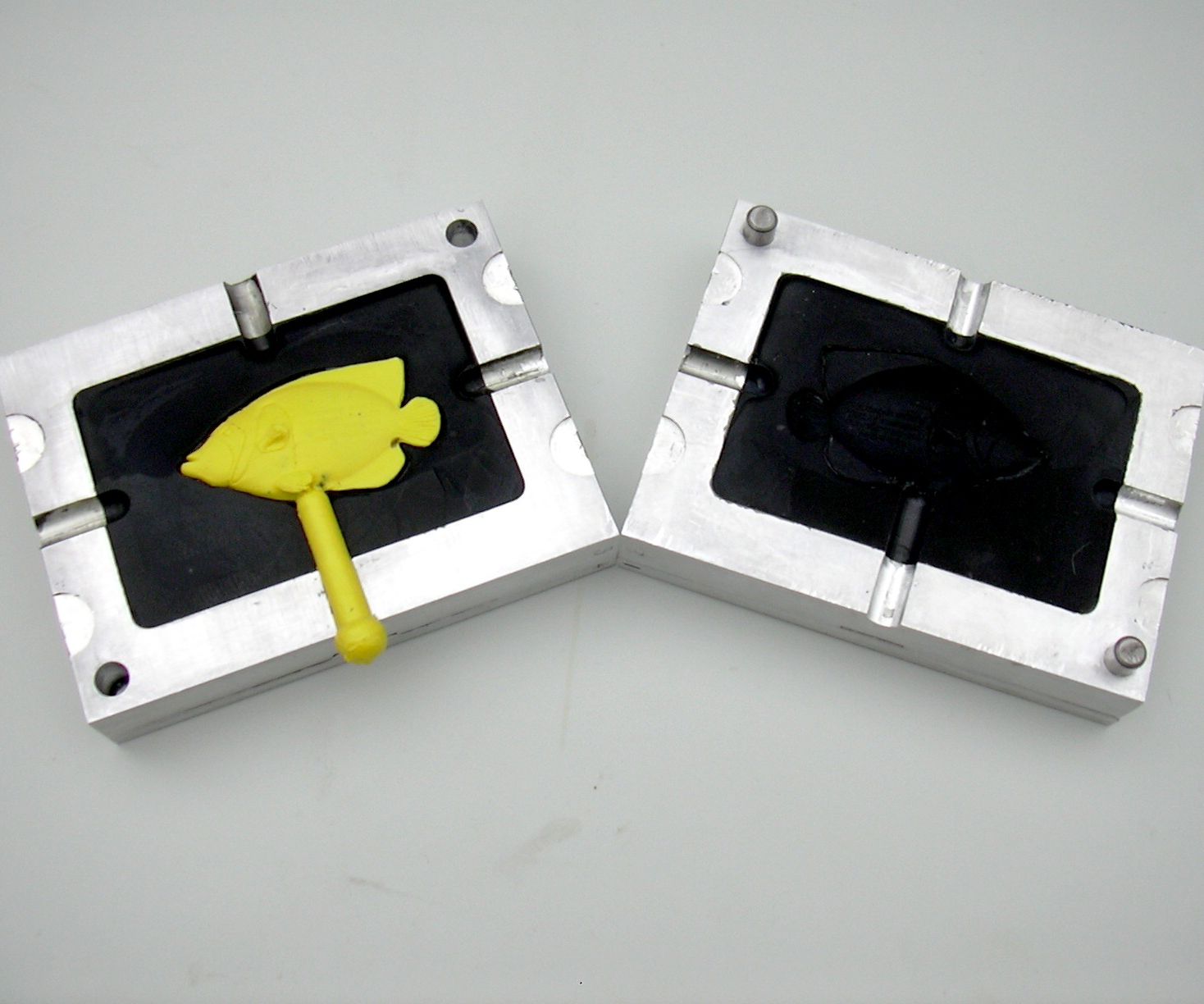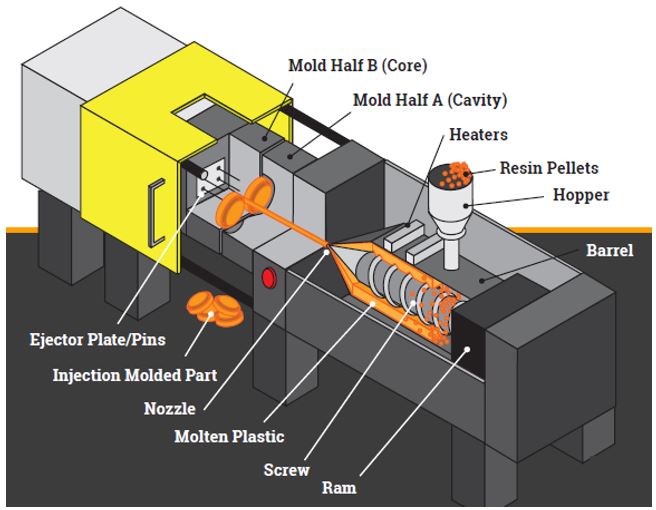The Future of Plastic Shot Molding: Trends and Innovations to View
As the plastic injection molding sector evolves, a number of crucial fads are arising that assurance to improve its landscape. Automation and clever production strategies are established to boost performance, while the change in the direction of lasting products shows a growing ecological awareness.
Automation and Smart Production
As the plastic injection molding industry advances, automation and clever production are taking spotlight, reinventing production procedures - Plastic Injection Molding. The integration of sophisticated modern technologies such as robotics, IoT (Net of Things), and expert system is enabling makers to enhance effectiveness, decrease functional costs, and boost item quality. Automated systems enhance workflows, lessening manual treatment and raising throughput, which is important in fulfilling the rising need for quick production cycles
Smart producing modern technologies promote real-time monitoring and information evaluation, enabling companies to maximize machine performance and predict maintenance demands. This proactive approach not only decreases downtime but also prolongs the life-span of equipment. The use of collaborative robots, or cobots, boosts the adaptability of manufacturing lines, making it possible for employees and makers to run side by side safely and efficiently.
The fostering of automation in plastic shot molding is not simply a trend but a strategic critical for services intending to remain affordable in a worldwide market. By using these innovations, makers can achieve greater accuracy, reduce waste, and adapt swiftly to transforming client demands, placing themselves for lasting growth in an increasingly automatic future.
Sustainable Materials and Practices
The push in the direction of automation and smart production has paved the method for a greater emphasis on lasting products and methods within the plastic shot molding industry. Business are progressively looking for eco-friendly options to typical petroleum-based plastics, leading to the fostering of recycled and bio-based products. These sustainable products not just decrease environmental impact but likewise line up with consumer demand for greener products.

In addition, collaboration between manufacturers, material providers, and environmental companies is cultivating innovation in the development of sustainable products that fulfill efficiency criteria without endangering top quality. As laws around plastic use become stricter, the industry is poised to adjust by welcoming these lasting techniques, making sure long-lasting practicality and decreasing dependence on non-renewable resources. The integration of sustainability into plastic shot molding is not just a pattern; it is becoming an important component of company duty and operational quality.
Advances in 3D Printing
Current improvements in 3D printing innovation are significantly changing the landscape of plastic shot molding. The combination of additive production procedures enables for the fast prototyping of complicated geometries that were difficult or when challenging to attain with traditional approaches - Plastic Injection Molding. This capacity not only increases product growth cycles however additionally decreases product waste, aligning with the growing need for sustainable production practices
In addition, the development of crossbreed manufacturing methods, which incorporate 3D printing and injection molding, uses makers the ability to produce detailed designs while preserving the performance of automation. This technique makes it possible for the production of personalized components tailored to details customer demands find here without giving up the rate and scalability that injection molding offers.
In addition, advancements in materials, such as high-performance polymers and composites particularly made for 3D printing, are boosting the useful abilities of printed components. These products can hold up against greater stress and show enhanced thermal properties, making them ideal for more requiring applications.
As 3D printing continues to progress, its integration into plastic shot molding procedures promises to boost productivity, reduce prices, and foster development in product design, positioning makers to better fulfill the obstacles of an open market.
Data Analytics and IoT Combination
Information analytics and the integration of the Internet of Things (IoT) are transforming plastic injection molding by offering manufacturers with unprecedented insights into their procedures. By leveraging real-time information accumulated from interconnected makers and look at these guys sensing units, makers can keep an eye on performance metrics, determine inefficiencies, and optimize manufacturing procedures. This data-driven technique assists in predictive maintenance, reducing downtime and expanding devices life expectancy.
Additionally, IoT integration permits boosted high quality control. By continuously tracking variables such as stress, temperature, and cycle times, makers can swiftly detect inconsistencies from established criteria and make modifications in real time. This not just enhances item consistency but likewise reduces waste and scrap prices.
The combination of information analytics and IoT innovations also encourages producers to take on more active production methods. With access to detailed data analytics, organizations can reply to market demands with better flexibility, readjusting production routines and arrangements as needed. This flexibility is important in a quickly transforming manufacturing landscape.

Modification and Layout Adaptability
Just how can modification and style flexibility boost the competition of plastic injection molding? Modification enables producers to fulfill certain client demands, accommodating unique measurements, shapes, and capabilities that common products might not satisfy.
Advancements in style technologies, such Read Full Report as computer-aided layout (CAD) and rapid prototyping, more reinforce this pattern. These tools allow designers to develop complicated geometries and intricate patterns, which can be effortlessly integrated into the manufacturing process. As an outcome, producers can react swiftly to altering customer preferences and market needs.
Moreover, the application of modular tooling systems boosts style flexibility, enabling for quicker adjustments between various item designs without substantial downtime. This flexibility can result in minimized preparations and lower production prices, making companies a lot more dexterous and competitive. Inevitably, embracing personalization and style adaptability in plastic shot molding not only raises item offerings yet also enhances market positioning in an ever-evolving landscape.
Final Thought
The future of plastic shot molding is defined by considerable developments in automation, sustainable practices, and cutting-edge materials. Customization through modular tooling and quick prototyping will certainly allow producers to remain responsive and competitive to the vibrant needs of the market.

The future of plastic injection molding is identified by significant improvements in automation, lasting techniques, and innovative materials.